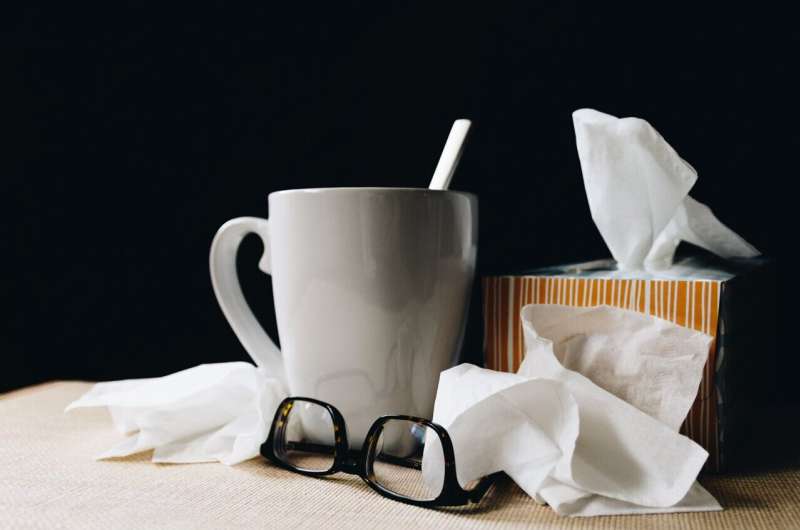Colds and the flu vanished during COVID but they're back

They've arrived just when life seemed good again.
Cold and flu germs, which nearly vanished for two years, are roaring back, according to doctors and federal disease-trackers.
As we do less masking and more hugging and handshaking, "there is greater transmission of viruses," said Dr. Jorge Salinas, hospital epidemiologist for Stanford Health Care.
To be sure, COVID-19 is still spreading.
But other long-lost ailments are catching up. At schools, "it's not COVID," said Salinas. "Everybody has a cough and one thing or another."
For a long time, masks and social distancing did a bang-up job of protecting us. But now we've gotten casual. I know this to be true because, as I type this, a big box of Kleenex is my one and only friend.
It's not just me: We're all heading back to our regular haunts, rediscovering the kind of liberation that comes with a fully-booked vaccine card.
"People are moving around more," sharing their germs with others, said UC San Francisco infectious disease expert Dr. Peter Chin-Hong.
Several other things are driving the trend, he said.
This year's flu vaccine was a flop. There was a mismatch between the strains of virus in the vaccine and what's circulating, according to the U.S. Centers for Disease Control and Prevention. The 2021-2022 flu shots were only 16% effective at reducing a person's chance of getting a mild or moderate infection—compared to some prior years, where rates reached as high as 50% or 60%.
While the nation's overall flu activity has begun to decline, it remains elevated or is increasing in certain regions, including parts of the West. In some Bay Area communities, wastewater surveillance shows a jump in the prevalence of flu viruses starting around March 23.
Secondly, we're back to touching everything again. It was reassuring when COVID research showed it wasn't necessary to wash mail and groceries. But—surprise! —cold-causing rhinoviruses are more hardy than coronaviruses. They can live on surfaces for longer. And they're tougher to wash off your hands.
Finally, our immune systems have forgotten what these routine viruses look like.
"We've been in 'COVID country' for the last two years," said Chin-Hong. "So we don't have as much immunity to any of these other things."
After spending nearly 28 months being panicked at the first sign of any sickness, it's unsettling to experience a drippy nose, stuffy head, coughs and sneezes.
Over time, however, society will readjust to this higher risk of perfectly ordinary ailments, doctors said. It's part of regaining some semblance of normality.
But COVID taught us some lessons that may help reduce transmission of these routine and annoying germs, said Salinas and Chin-Hong. For instance, our buildings are better ventilated. We've learned it's important to socially distance—even stay home—when you're sick.
That mask? Don't toss it yet.
"I hope our culture changes," said Chin-Hong. "Wearing a mask when you have even mild symptoms—that's good for all of us.
"I hope that's the legacy of the last few years."
2022 MediaNews Group, Inc.
Distributed by Tribune Content Agency, LLC.




















